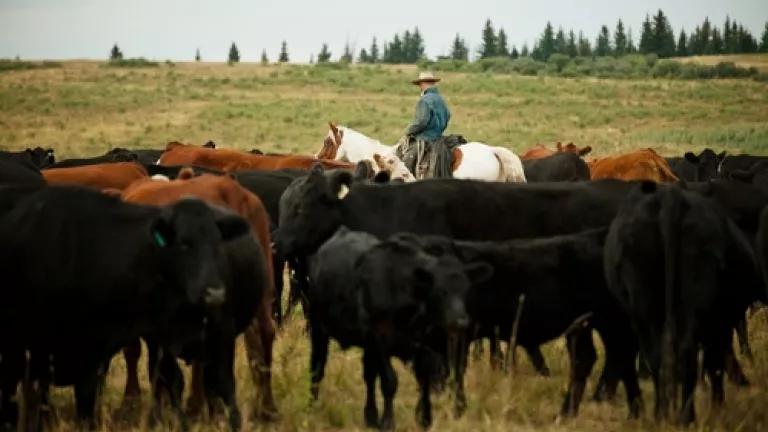
Recently, Reps. DeFazio (D-OR) and Campbell (R-CA) introduced a bill (H.R. 4214) that would prevent Wildlife Services from using the poisons Compound 1080 and sodium cyanide to kill predators. As my colleagues and I have written in earlier blogs, Wildlife Services routinely uses these dangerous, indiscriminate, and environmentally harmful chemicals to kill predators as a subsidy to the livestock industry.
Photo courtesy of Lisa Whiteman
Understandably, as we talk to law makers about this bill, we hear a reoccurring question: if Wildlife Services is banned from using these chemicals to kill predators, how will they solve predator-livestock conflicts?
The answer to this question is that there are many non-lethal ways to prevent conflicts between predators and livestock, some of which are described in this new fact sheet. These methods include simple actions that keep predators away from livestock, such as using guard animals, erecting barriers (e.g., fences), employing scare devices like firecrackers, removing or burying any carcasses immediately, increasing human presence with livestock, and herding livestock in tight bunches so that they can better defend themselves against predators.
These methods can be less expensive and more effective than lethal methods. For example, a non-lethal predator control program in Marin County, California resulted in 2.2% livestock losses in the first six years and cost $10,000 less a year than the previous lethal program.
Not only do non-lethal methods work, but many ranchers also use them because they’re better for the landscape since removing top predators impacts ecosystems in negative ways. Take Andrew, for example. Born and raised in rural Montana, he married a former Yellowstone Park employee and the couple now runs the cattle operations on a ranch in Montana’s Centennial Mountains, where they manage their herd to mimic the way bison once used the land. By riding with their cows once or twice every day, they keep the herd bunched up, which makes it much more difficult for wolves to pick them off.
Wildlife Services uses poisons to deal with predator-livestock conflicts because it's what they've done for years -- in fact, since 1931 when President Hoover created the agency. But just because you do something one way for a long time, doesn't mean it's the right way to do it. And that's most certainly the case here. We now know the value predators add to our landscape. We also know the harms these poisons cause to wildlife aside from predators, our national security, and even ourselves. So, as difficult as change may be, it's time for Wildlife Services to get with the program. It's time for Wildlife Services to use more non-lethal approaches to predator-livestock conflicts.

